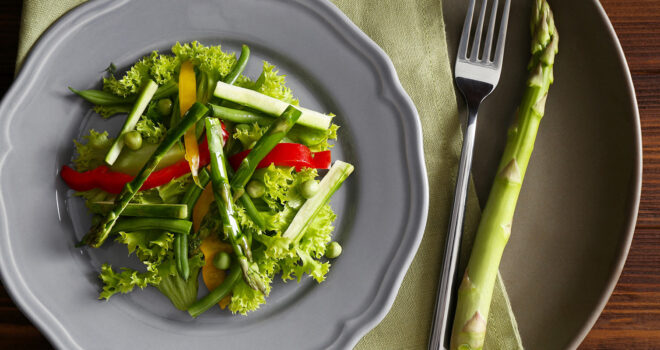Eating raw vegetables helps you obtain certain vitamins that are sensitive to heat, while eating cooked vegetables can be more effective at making certain nutrients easier to assimilate or digest. Both cooked and raw vegetables are important and help balance your intake of key nutrients!
Good news about cooking carrots!
Cooking carrots makes the fiber in them easier to digest and less irritating. For people with a sensitive digestive system–young children, for example–eating more cooked fruits and vegetables is recommended. Cooking also promotes the release of certain vitamins and minerals that are more bioavailable and easier for the body to assimilate. This is the case with provitamin A or beta-carotene. To get the most out of eating carrots and tomatoes, it’s best to eat them cooked. Adding a little oil is very beneficial because it makes provitamin A more soluble and easier for the body to digest. Tomato soup, carrots with vinaigrette, and cooked carrots are therefore highly recommended!
Careful, vitamin C is fragile!
When cooking vegetables, it is best to shorten cooking time. The longer cooking time is, especially if the food is not covered and therefore in contact with more oxygen, the more the nutritional quality will deteriorate. This is the case with vitamin C, by far the most fragile vitamin. Vitamins B1 and B9 are also sensitive. Cooking in water, especially a large amount of water, can cause water-soluble vitamins (B1, B2, C, etc.) to leave the vegetables and dissolve in the water which is generally thrown out and not consumed. For this reason, steaming the vegetables or using a wok is preferable. These methods avoid leaching vitamins. When making soups or stews, you can simmer the vegetables in the broth that you then eat.
Enjoy both cooked and raw vegetables
Enjoy a variety of tastes and textures, because eating both raw and cooked vegetables lets you change things up. You can savor the crunchy freshness of raw vegetables as an appetizer or snack. And cooked vegetables, which sweetly melt in your mouth, are wonderful in a hot soup for a chilly evening. Using a variety of preparation methods also means adapting the vegetables for different meals and for a range of tastes. You can steam, boil, microwave, sauté, puree, or bake your vegetables, among other methods, and one thing is sure: variety guarantees a balanced diet.



 Bell pepper
Bell pepper  Tomato
Tomato  Vegetable garden: growing artichoke
Vegetable garden: growing artichoke 









